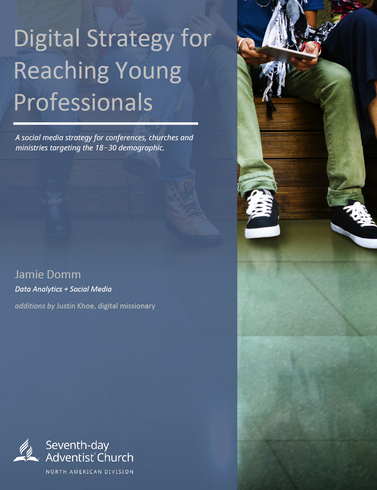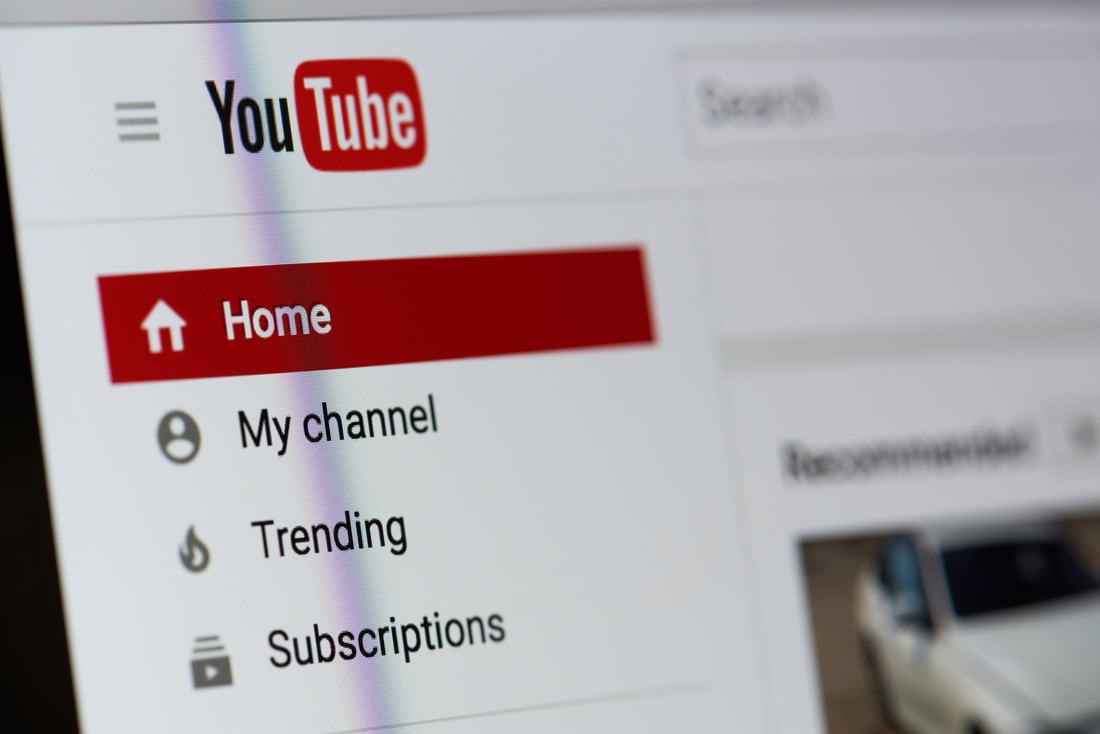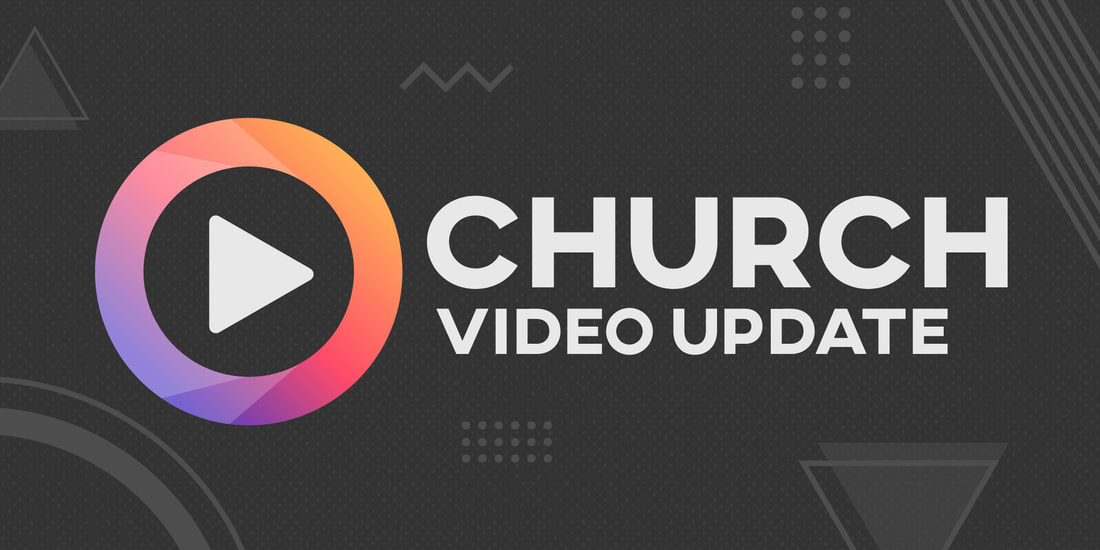Jamie Jean Schneider DommDigital Strategist, Social Media + Big Data, North American Division IntroductionHumanity has been asking existential questions forever. We’re wired for purpose, constantly seeking to answer the big question, “Why?” Although a record-breaking number of believers are leaving brick-and-mortar churches in America, every month, over 100,000 people go on Google and type into the search bar, “Is God Real?” Countless others search for Bible study tools. Our neighbors are asking Siri, not a pastor, “What happens after death?” or profoundly, “What is faith?” The world is going digital, but should the church? The answer is that the gospel should go to all the world, using whatever tools and gifts we have. The eyes of people are on screens, especially the youth. The church must be equipped to go where people’s attention is focused—to be in the world, but not of it. In this free handbook, we’ll demonstrate how to use social media networks for ministry and evangelize to young adults ages 18−30.
Jamie Jean Schneider DommDigital Strategist, Social Media + Big Data, North American Division Justin KhoeDigital Missionary, "I’m Listening with Justin Khoe; Life. Faith. And the things that matter." Before subscribing to your channel, most people visit your channel page to get a bird’s-eye-view of what to expect. It is the number-one place where people will decide to subscribe to your channel and, therefore, requires careful thought. It’s important to understand visitor behavior on the platform. Often, people will watch and like a video that has come up in their suggested videos. Then they click on the name of the creator, which directs them to the channel page. What they find will influence whether they decide to subscribe to the channel to receive that content in their regular feed of videos. Many times, they’re looking for a few specific things, such as: How many videos has this creator uploaded? (after all, what’s the point of subscribing to a channel with only two videos?); how often do they upload? (once a week, twice a week?); what types of videos are they offering? They may also check out your most popular videos. Spend time organizing your channel page to help answer these questions and create a brand look that appeals to the target audience you are trying to reach. Work with a professional designer, if necessary. To start, consider your channel name and how it can tie into your ministry’s branding and goals for being on the platform. Refer to the previous section of this guide on branding to help you identify which direction you would like to go. The name “That Christian Vlogger” immediately communicates to the viewer that they can expect video blogs of Christian content, making the value of the channel instantly apparent. The more common route is to choose the name of a personality or organization. However, this may make it more difficult to communicate purpose and value. Ask, “Does this channel name make a person want to subscribe to the channel?” When an individual uses his or her name, it implies that the channel contains content that is more personal and relatable to the viewer. Be careful to avoid names that only have internal meaning and don’t convey a clear message or value to the broader public. This is especially important for evangelistic channels seeking to reach people outside the faith who may not be familiar with Christian terms. People may misinterpret your content as not being for them. Next, develop strong copy for your YouTube channel’s “About” page. The first sentences are the most important, as this copy will pop up in the hovercard for your channel in several places around YouTube, such as the comment and suggested channels sections, as well as the snippet text in the YouTube search results. Therefore, it’s very important that you are intentional with how you craft this copy. These first few sentences should call out your target audience, helping the reader identify that this content is for them. Also, pitch the value of your channel for that target audience. Ask yourself, “Why should they prioritize my content over another similar channel?” or “How will they be affected by my content?” Assume that the reader has never heard about you before and has no idea what your channel is about. Then take the next paragraph to describe what your channel is about and what a person can expect if they were to subscribe to your channel, including your posting schedule. Additionally, weave keywords that are relevant to your channel into the copy and the content you’re creating. Avoid just listing keywords at the end of your “About” page. Finally, you can include links at the bottom of the “About” page that direct to your website and other social media profiles. The channel trailer is a video that is shown very prominently at the top of your channel page for prospective new audience members. Once they hit “subscribe,” they will no longer see that video. Therefore, create a short channel trailer that speaks directly new people, letting them know what your channel is about or what your goal is, how often they can expect new content (e.g., daily, weekly, monthly), and what kind of content they can expect on a regular basis (e.g., vlogs, comedy, inspirational, etc.). Your channel trailer should feature you addressing the camera directly. If possible, give them visual demonstrations of what your channel will show them with quick clips (i.e., your b-roll) while you speak. These elements combined help create an engaging trailer that sets clear expectations, enabling the viewer to better decide if this channel is for them. The channel header is found at the very top of your channel and is an opportunity for you to set your brand apart from other channels. Branding helps communicate a greater perceived value. Make sure your branded look is professional, clean, and modern. Include your upload schedule in your header, and use graphics and text to communicate what the channel is about. Consider including a close-up of your face (if you are the “face” of your ministry) that enables the viewer to see the whites of your eyes on a small screen. Be sure to also include relevant social media links to your ministry’s other platforms. Consider which videos you want people to see first. One strategy is to highlight your most popular videos in a playlist. By featuring your highest-viewed videos, people are more likely to give them a chance because a significant number of other people have already watched them, indicating they are worth your time. This is called social proofing. Another strategy is to feature your highest-converting videos. These can be identified by looking at your channel analytics to see which videos convert viewers into subscribers the most often. Your most-viewed videos may not effectively convert viewers to subscribers. Spend time organizing your videos into additional playlists based on related topics, choosing your best-performing videos for each topic. This can help create a string of binge-worthy content, increasing the time people spend watching and engaging with your content. You may even want to create a playlist dedicated to new subscribers titled something like “New Here?” or “New to the Channel?” This will allow a newcomer to get to know you and your channel through a curated playlist of videos designed to introduce them to your personality and content. Humans connect better with other humans and stories, so share some of your back story here. Checklist for next steps
Jamie Jean Schneider DommDigital Strategist, Social Media + Big Data, North American Division Justin KhoeDigital Missionary, "I’m Listening with Justin Khoe; Life. Faith. And the things that matter."  While it is true that content is king, it is also true that marketing is queen. On YouTube, the things that most influence your discovery and channel growth (other than quality of content) are your thumbnails, titles, and tags. Each video that you create should have one focal point or one problem that you’re trying to address. Your thumbnails, title, description, and tags should all work in unison to communicate that message and to optimize the exposure of every piece of content you produce. YouTube’s algorithm weighs all the elements of your video—views, length, titles, tags, etc.—to determine whether to promote that particular video in related search queries, suggested videos, and on the homepage. Most people will find your video through a search query or a related video, so it’s important to have a solid strategy to increase your exposure. Therefore, knowing how to optimize your thumbnails, title, and tags is essential to growing an audience. Best practices for each element
If you’ve already established a library of content on YouTube, go back and optimize each of these elements. This will cause YouTube to reevaluate each of your videos and their ranking, helping to better position your existing content. These four elements combined help increase the authority of your channel content, but don’t expect immediate results or for your first video to go viral. YouTube also assesses the quantity of content your channel has produced and gives more authority (and better rankings) to channels that have more content because there is more for people to watch. Expect to put in significant amounts of time to create a wealth of content using these best practices. To be successful on YouTube, you need two pieces. First, you need valuable content that answers people’s questions, meets their needs, makes a difference in people’s lives, and is optimized with proper thumbnails, titles, descriptions, and tags. Second, you need consistency when it comes to putting content out on the platform. Do this, and you will see results. Jamie Jean Schneider DommDigital Strategist, Social Media + Big Data, North American Division Justin KhoeDigital Missionary, "I’m Listening with Justin Khoe; Life. Faith. And the things that matter." Your channel or content strategy is simply the direction you plan to take with your videos to help achieve your goals. The easiest way to determine a channel strategy is to ask yourself a few questions about your audience. What are they interested in? What kinds of questions do they have? What types of problems can you help them solve? Instead of guessing at the answers to these questions, spend time with these people, and ask them these questions! Refer to the “Understanding Your Target Audience” and the “Content Strategy” section of this guidebook to help you through this process. Once you determine who your target audience is, ask, “Why should they care about my content?” Develop an overall value proposition for your channel based on the needs or core values of your target audience. The value proposition answers two questions: “What do you offer?” and, “Why does it matter?” What value can you deliver to your target audience through your videos? Once you can answer this question, clearly promote your value in each of your videos. Each video should have the underlying objective of moving you toward your strategic goal. Then develop a content creation strategy that balances engaging your current audience with attracting new viewers through highly searchable and sharable content. If your channel is new or small, plan to gear around 75% of your content toward expanding your audience base. Once you get established with tens of thousands of subscribers, switch the balance to favor fan-centric, community content to keep your audience engaged. There are essentially four types of content:
Establish a secondary value in all your videos based on the perceived relationship your audience can develop with you. Many people will watch your videos and engage because they feel connected to you. The on-camera personality should seek to strategically integrate the relational aspect of your channel into the videos to foster a sense of community. People want to feel like they are getting to know you, trust you, that you’re credible, and that they would enjoy spending time with you in person. People are drawn to authenticity and can relate more easily when you demonstrate your humanity and vulnerability. Your content strategy should ultimately serve to support your ministry’s goals for being on the platform. Refer to the section on “Developing a Strong Foundation” to determine what those goals are and possible key performance indicators. Next Step Identify five other YouTube channels that create the type of content that you are looking to create and start watching their content. Consider this activity market and competitor research. Jamie Jean Schneider DommDigital Strategist, Social Media + Big Data, North American Division Justin KhoeDigital Missionary, "I’m Listening with Justin Khoe; Life. Faith. And the things that matter." As odd as it might sound, to reach a large audience, you must stop trying to reach everyone! Think of your YouTube channel as a TV channel. Each channel has a purpose and an intended audience. For example, ESPN focuses on sports, the Cooking Channel on food, etc.
What is your channel about, and who is your channel for? Is it for women? If so, how old are these women? Are they single? College-educated? What type of hobbies do they have? The more you can clearly define your target market, the more success you’ll have in breaking through the noise and reaching your audience. Next Step Refer to the “Understanding Your Target Audience blog” and write a three- to five-paragraph description of your ideal audience member. Jamie Jean Schneider Domm Digital Strategist, Social Media + Big Data, North American Division Justin Khoe Digital Missionary, "I’m Listening with Justin Khoe; Life. Faith. And the things that matter." Contrary to popular belief, running and starting a ministry’s YouTube channel doesn’t have to break the bank. It is a myth that you must have a six-figure budget to succeed. With the advent of social media, the bar for acceptable picture and video quality has been lowered. Every one of us is used to the notion of watching hours of content per week that was shot on a cell phone. However, with all the options of lenses, cameras, and sound equipment vying for your attention, it can be incredibly overwhelming when trying to figure out what is actually needed to get started. Rest assured, even with limited knowhow and a moderate budget, you can create great content. While it can be easy to be distracted by the shiniest and newest camera or microphone on the block, never forget that content is king. Higher-quality equipment can be helpful, but it is not always necessary, especially when you are first getting started. Beware of contracting GAS (Gear Acquirement Syndrome). When I (Justin Khoe) started my channel, I was working with an almost non-existent budget, and I paid for everything out of pocket. Eventually, valuable content will always beat out expensive equipment. The most important thing is to get started. Below is the recommended equipment for three different budget levels: a low, medium, and high budget. The prices below represent approximate costs as of 2020. Prices may change dramatically due to 2020 economic challenges. Note: If you are working with a church, you might already have audio equipment or lighting available to borrow.
Next Steps Determine your budget. Choose the camera, lights, and microphone. Start creating! Jamie Jean Schneider DommDigital Strategist, Social Media + Big Data, North American Division Justin KhoeDigital Missionary, "I’m Listening with Justin Khoe; Life. Faith. And the things that matter." One major question that you should ask yourself about any piece of content uploaded to social media is, “Why would anyone care to watch or listen?” While uploading your full worship service will certainly be a blessing to your current church body, think about each online viewer as a first-time guest.
Before a prospective viewer can get to the actual message, many ministries force them to sit through 20−30 minutes of content that is irrelevant to them. Why should someone who has never been to your church care about the announcements, special music, or offertory? Instead of uploading your program’s entire livestream to YouTube, a better approach would be to optimize your content for this specific platform once the live event is over. Realize that YouTube is a search engine; it’s a social community with its own subculture and set of social norms. Upload just the individual sermons or messages from your evangelistic series or camp meetings, and optimize the videos to be found via search. Break your livestreams and longer videos into smaller segments for distribution and community engagement on YouTube and other social media platforms such as Facebook and IGTV. Consider breaking your videos into two- to three-minute, easy-to-watch clips that highlight the key points of an inspiring message, or pull out the children’s stories into their own dedicated playlist. Your goal should be to create as much evergreen content as possible to promote your message, church, or ministry to seekers. Capturing the attention of your audience several different times can help build trust and value regarding your ministry. Evergreen content can be shown to new audiences repeatedly while retaining its intrinsic value, meaning it doesn’t become less interesting or less relevant over time. Be sure to avoid including the date in the title of your video or mentioning it in graphics or dialogue during the selected message. Perception is important in outreach. The more dated your content seems, the less relevant it will appear, even if it still carries tremendous value. Questions to consider before uploading your videos:
Follow the guidelines outlined in the How to Start A YouTube Ministry: A Comprehensive Guide. These guidelines will help position your video in the best possible way, not only to be found, but also get watched. Be sure to follow these steps because your content cannot lead people to Christ unless it is viewed. Jamie Jean Schneider DommDigital Strategist, Social Media + Big Data, North American Division Justin KhoeDigital Missionary, "I’m Listening with Justin Khoe; Life. Faith. And the things that matter." The way to bring natural traffic to your channel is to position your video so the people looking for it can find it. This process is called SEO (search engine optimization), and the same basic steps can be used for any digital platform. YouTube is most often used as a search engine. Find content, write content, and curate content related to top YouTube searches. Frame your posts to pique curiosity and answer people’s questions, addressing their deepest longings. You can get top search data from any search engine, YouTube, and other social media trend tracking sites. Try it. Start typing in a question, and let the search engine auto-finish. The top results represent the most popular search queries. In other words, you will see what large numbers of people are searching for online. It gives you a sneak peek into their needs, worries, nagging questions, and often hidden yearnings. This is how you listen.
Recommended steps
Once this is done, create your video, and follow the guidelines outlined in the How to Start A YouTube Ministry: A Comprehensive Guide. This will help position your video in the best possible way, not only to be found, but also get watched. Be sure to follow these steps because your content cannot lead people to Christ unless it is viewed. Jamie Jean Schneider DommDigital Strategist, Social Media + Big Data, North American Division Only 20% of Americans regularly attend church, and only 2 in 10 millennials consider regular church attendance important. The Church no longer has the option of embracing change or leaving it to the next generation. The time is now; otherwise, we will become irrelevant. Change is never easy, but anything is possible with the Lord (see Matthew 19:26).
People search online for answers to their problems. They turn to the internet for companionship, understanding, information, anonymity, and more. We must be the voice that answers back, online, to share our message of hope and wholeness. Our digital presence may be the only exposure to the Gospel many people receive. We must recognize that the mission field is online, and just as legitimate as traditional evangelism. We need an army of digital evangelists dedicated to carrying the gospel to the digital mission field. Here are 5 steps you can take to become a digital evangelist with resource links:
Jesus sought first to fulfill people’s needs; He then invited them to follow. We can use social media and digital tools to achieve our mission of spreading the gospel and helping people by creating content that focuses on mental, physical, and spiritual needs first. Once this foundation is established, we can invite our audience to “taste and see that the Lord is good” (Psalm 34:8, NIV). When used for digital discipleship and evangelism, this shift in focus is a way we can follow Jesus’ example for everyday ministry to real people. We can use social influence for kingdom building while utilizing modern tools and technologies. For a practical guide to using digital technologies for outreach, community service, growth and evangelism, purchase the North American Division’s Digital Discipleship & Evangelism Guidebook at SDAdata.blog/book. Available from AdventSource. Print, Kindle and ePub versions available. Jamie Jean Schneider DommDigital Strategist, Social Media + Big Data, North American Division Justin KhoeDigital Missionary, "I’m Listening with Justin Khoe; Life. Faith. And the things that matter." INTRODUCTIONPeople come to YouTube for entertainment and education. It’s not an exaggeration to say that video is king! Internet video traffic accounts for 80% of all consumer Internet traffic. YouTube is the second-largest search engine and the second most-visited website in the world. This is where young people spend most of their time online. Creating a YouTube account is very cheap. All you need is a camera and a device to upload from. YouTube is great for communicating ideas quickly and provides a storage place where your content never dies. It can be revisited or reposted as many times as you want. In this free guide, we’ll take you through a step-by-step process for starting a YouTube channel from scratch. We strongly encourage you to take the time to go through this guide completely and review the resources before starting your YouTube channel. Or, if you already have a channel, use this guide to evaluate where changes need to be made. If you’re not yet convinced that your ministry should consider creating a YouTube channel, review the following statistics. YouTube Statistics (May 2020)
If you have the calling to reach young people, YouTube is a must. This 63-page guide will help you determine relevant topics for your target audience and position your videos to maximize reach and watch time. Click the button below to download this free guide. |
Archives
August 2020
Categories
All
|
- Home
- BLOG
-
RESOURCES
-
RESOURCE MENU
>
- ADVENTIST IDENTITY GUIDELINES
- BIG DATA RESOURCES
- BRANDING, IMAGE & DESIGN RESOURCES
- CHURCH/MINISTRY SPECIFIC RESOURCES
- COPYRIGHT & TRADEMARK BASICS
- COURSES
- EMAIL RESOURCES
- GUIDANCE FOR HIRING SOCIAL MEDIA POSITIONS
- PODCASTS
- REPORTS & CASE STUDIES
- SOCIAL MEDIA RESOURCES
- (SOCIAL) VIDEO RESOURCES >
- TEXTING 4 CHURCHES
- TRACKING & ANALTYICS
- WATCH VIDEOS & TUTORIALS
- WEBSITE TIPS
- SOCIAL MEDIA GUIDELINES
-
RESOURCE MENU
>
- SEO
- Digital Discipleship & Evangelism
- COVID-19 RESOURCES
- eNEWSLETTER











 RSS Feed
RSS Feed